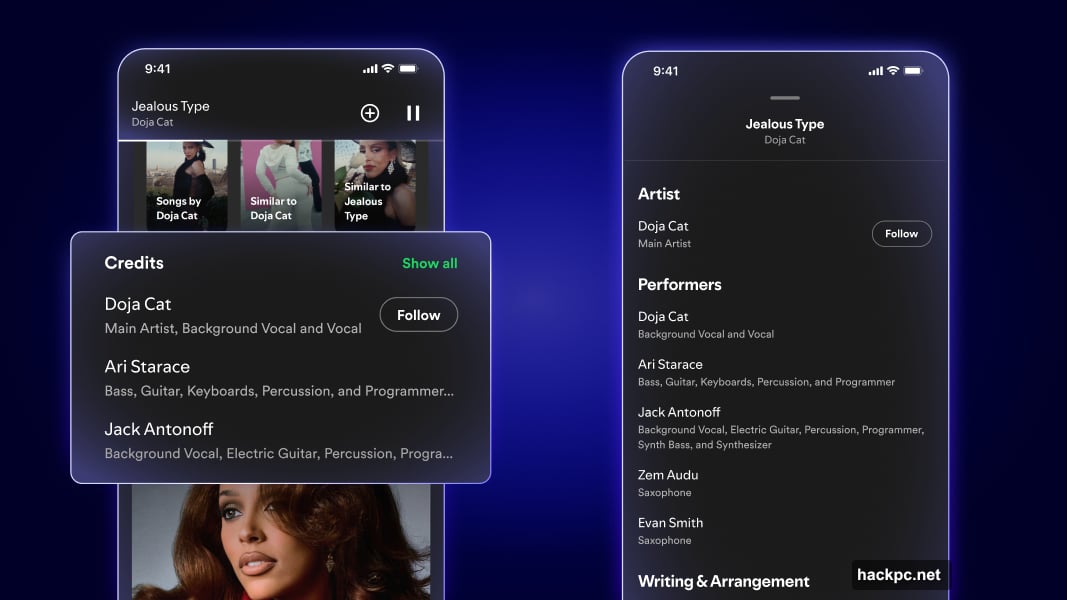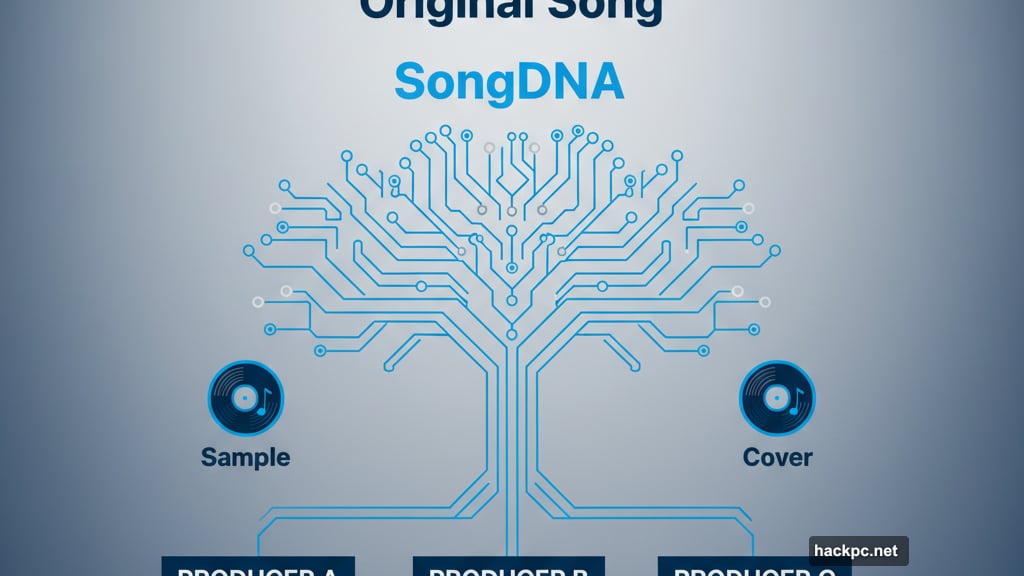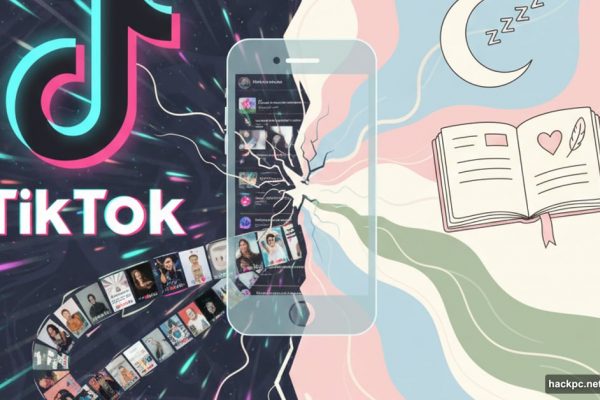
Spotify finally answered a question music nerds have asked forever: Who really worked on this song?
The streaming giant rolled out tools that go beyond just listing the artist name. Now you can explore producers, engineers, songwriters, and even background vocalists who shaped your favorite tracks. Plus, new features reveal how songs connect to each other through samples, covers, and collaborations.
This matters because most listeners have no idea how many people contribute to a single song. Modern music production involves dozens of professionals. Yet their names rarely surface unless you dig through tiny print on album credits.
SongDNA Connects the Musical Dots
Spotify’s new SongDNA feature turns song credits into an interactive exploration tool. Think of it as a family tree for music.
Click on any track and SongDNA shows which songs got sampled in it. It reveals who covered the tune and what other projects the collaborators worked on. So if you love a producer’s work on one track, you can instantly find their other productions.

The feature pulls sample data from WhoSampled, an online database Spotify acquired. That community-built resource has cataloged millions of samples, covers, and remixes over the years. Now it’s baked directly into Spotify’s interface.
Tech researcher Jane Manchun Wong spotted references to SongDNA in Spotify’s code back in October. At the time, it seemed like an experiment. Turns out it was coming all along.
Background Stories Explain the Music
Another new feature called “About the Song” adds context through swipeable cards in the Now Playing view. These cards explain what inspired the song, stories behind its creation, and its cultural impact.
Spotify isn’t writing these stories themselves. Instead, they’re pulling from third-party sources like Wikipedia and news sites. Each card links to its source, so you can verify the information or read more.
This approach differs from Spotify’s previous partnership with Genius. That feature only worked for songs Genius had already documented. The new system can pull from anywhere on the web, making it much more comprehensive.

However, quality will depend on what’s available online. Popular songs will have rich background information. Obscure tracks might offer little or nothing.
TIDAL Already Did This
Spotify isn’t first to market with interactive credits. TIDAL launched similar features that let users explore music through contributor names.
But Spotify’s massive user base changes the equation. More people will actually use these tools simply because more people use Spotify. Plus, integration with WhoSampled gives Spotify access to extensive sample data that TIDAL lacks.
The real question is whether casual listeners care about this information. Music nerds and industry professionals will love it. But does the average user want to know who engineered their workout playlist?
Premium Gets Early Access

Here’s the catch. SongDNA and About the Song are Premium-only features. Free users can’t access them.
Moreover, these tools won’t launch until early next year. Spotify plans to release them first through Spotify for Artists Preview. That gives musicians, producers, and other contributors time to verify their credits are accurate before public launch.
The expanded Song Credits feature is rolling out now on mobile devices. Desktop users will wait a few more months. At least this feature isn’t paywalled behind Premium.
Why This Matters for Creators
These features benefit the people who make music, not just listeners. Many producers and engineers work on huge hits without getting public recognition. Now their names appear prominently when someone explores a song’s credits.
Better visibility could lead to more work opportunities. If a listener discovers they love a particular producer’s style, they can explore that producer’s other projects. That exposure matters in an industry where connections drive careers.
Plus, proper credit has real financial implications. Songwriters and producers earn royalties based on credits. Accurate, prominent crediting helps ensure everyone gets paid correctly.

The Long Game
Spotify keeps adding features that position it as more than just a music player. Interactive credits, background stories, and connection mapping turn the app into a music discovery engine.
But let’s be honest. Most users probably won’t dive deep into credits regularly. These tools serve a niche audience of music enthusiasts and industry professionals.
Still, that niche audience includes influential tastemakers. Music journalists, DJs, and serious fans often drive discovery for mainstream listeners. Give them better tools and they’ll share their discoveries more effectively.
Spotify’s betting that differentiation through depth beats competing solely on price or catalog size. Every streaming service has basically the same songs. Features like SongDNA might give Spotify an edge.
Whether casual listeners actually use these tools remains to be seen. But for people who care about the craft behind the music, Spotify just got significantly more interesting.
Post Title: Spotify Adds SongDNA, Credits Features for Music Fans
Meta Description: [Spotify](https://www.spotify.com) finally answered a question music nerds have asked forever: Who really worked on this song?



Comments (0)